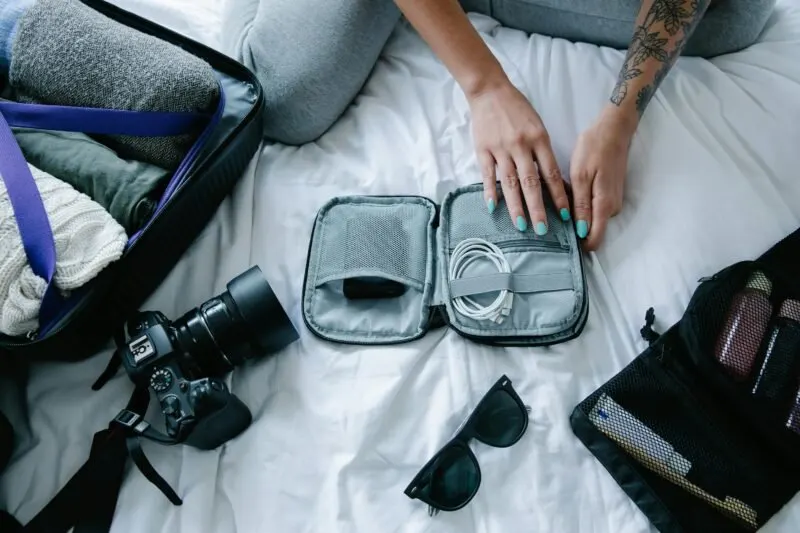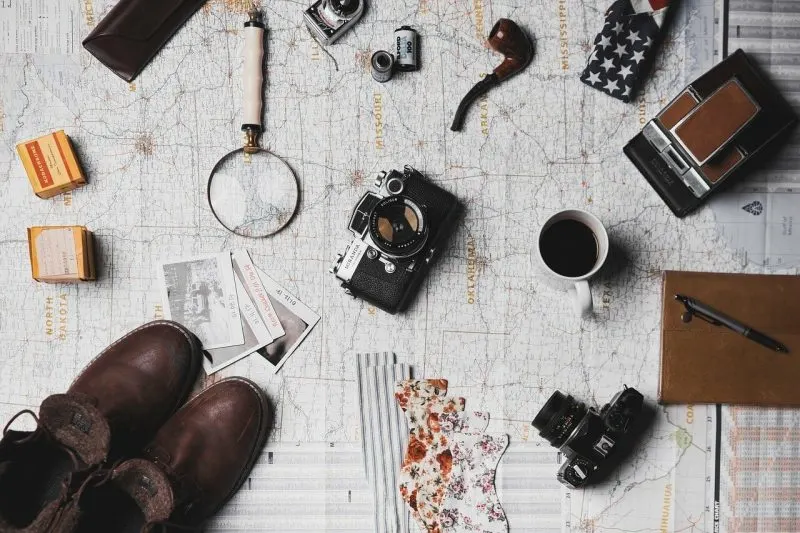Embarking on a hiking adventure or preparing for travel requires meticulous planning and smart packing choices to ensure safety, comfort, and efficiency.
Dive into this comprehensive guide to discover practical tips, expert recommendations, and must-have items that will elevate your adventures to the next level.

Essential Items for Hiking Trips
When preparing for a hiking trip, it is essential to equip oneself with items that ensure safety, comfort, and efficiency.
Gear selection should be based on the duration of the hike, the terrain, and the expected weather conditions. Below is a comprehensive list of must-have items for hiking trips:
Clothing
Choosing the right clothing can make or break your hiking experience. Opt for moisture-wicking base layers to keep sweat under control and maintain comfort.
Proper pants or shorts for outdoor activities offer flexibility and protection, while a sun hat and gloves provide coverage from the elements. Don’t forget to carry high-quality custom athletic socks to ensure comfort and support for your feet throughout the journey. Layer strategically to adapt to varying trail conditions and confidently step into nature.
Shelter
Packing reliable shelter equipment is non-negotiable for staying protected from unpredictable weather or for overnight trail stops. Depending on the nature of your hike, a lightweight tent, compact sleeping bag, or durable tarp are all excellent choices.
Equally important, it’s essential to consider how you’ll transport and safeguard your gear, including your vehicle’s setup. For example, investing in weather-resistant spare tire covers can protect your tire kit from harsh conditions while your vehicle is parked at the trailhead. This small but essential step helps ensure you’re prepared to return to a well-equipped, reliable mode of transportation after conquering the trail.
Illumination
When venturing into the outdoors, a dependable light source is essential for safety and visibility, especially in low-light or nighttime conditions. A headlamp is particularly practical as it leaves your hands free for other tasks, such as setting up camp, cooking, or navigating difficult terrain after dark.
Hydration System
Staying hydrated is non-negotiable during hiking. Pack a reliable hydration system, such as a reservoir or water bottle, to meet your fluid needs. Aim to consume one quart of water per hour of hiking.
Since natural water sources may not always be safe, carry water purification tablets or a portable filter to ensure clean drinking water. Being prepared helps you quench your thirst while staying healthy.
Nutrition
Fuel your body with high-energy snacks that are easy to pack and nutritious. Options such as nuts, dried fruits, and energy bars deliver essential calories to keep you energized.
With the average hiker burning around 550 calories per hour, ensure you carry enough food to match your energy expenditure. It’s always wise to pack an extra stash of snacks for emergencies. Proper nutrition keeps you moving and maximizes your hiking experience.
Fire Starting Tools
Fire is an indispensable resource when in the wilderness, providing warmth, enabling cooking, and even offering a psychological boost in stressful environments. Waterproof matches should be part of your kit as they can withstand wet conditions, ensuring reliability when the weather is less than ideal. A durable lighter is also a convenient alternative and offers quick and easy fire-starting capabilities.
For added security, pack fire starters such as cotton balls soaked in petroleum jelly, wax-coated tinder, or magnesium fire starters, which work well even in challenging weather conditions.
Weather Monitoring: Before setting out, always check weather reports for your destination and prepare for sudden changes. Unexpected rain, strong winds, or temperature drops can impact even the best-laid plans. Carry a compact weather radio or download an offline weather app to stay updated during the trip.

Tips for Choosing the Best Travel Gadgets
When selecting the best travel gadgets for an adventure, it is essential to consider functionality, weight, and durability. The right gadgets can enhance the travel experience by providing convenience, safety, and efficiency.
Here are key considerations and examples of travel gadgets that meet these criteria:
Functionality and Versatility
Gadgets that serve multiple purposes can save space and reduce the overall weight of your luggage. For instance, a solar-powered charger can not only charge electronic devices but also serve as a flashlight.
Similarly, a multi-tool can combine functions such as a knife, screwdriver, and bottle opener, making it a valuable asset for various situations.
Durability and Weather Resistance
Travel gadgets must withstand harsh environmental conditions, including extreme temperatures, moisture, and physical impact. Devices with an IP (Ingress Protection) rating, such as IP67 or higher, offer protection against dust and water, making them suitable for outdoor adventures.
Technological Advancements
The integration of advanced technology in travel gadgets can enhance safety and connectivity. For example, GPS devices with real-time tracking and emergency SOS features provide an added layer of security for adventurers in remote areas.
Additionally, noise-canceling headphones with Bluetooth connectivity can improve the travel experience by reducing ambient noise during transit.
First Aid Kit: A compact first aid kit should include adhesive bandages, antiseptic wipes, blister treatment, and any personal medications. Knowledge of basic first aid procedures is recommended to address common hiking injuries.

Best Practices for Packing Toiletries
Packing toiletries efficiently and securely is a critical aspect of travel preparation, ensuring both convenience and compliance with transportation regulations. The following best practices are designed to optimize space, prevent leaks, and maintain hygiene standards.
- Add plastic wrap under caps and store liquids in sealable bags to prevent spills.
- Use transparent, compartmentalized toiletry bags and group similar items together for easy access.
- Opt for solid toiletries and biodegradable or refillable packaging to reduce waste.
- Ensure all items are clean and dry, and use antimicrobial cases for added protection.
Step Into Every Journey with Confidence and Ease
Whether you’re hitting the trails or preparing for a long journey, being well-prepared is the cornerstone of an enjoyable experience.
With the right gear, travel gadgets, and packing strategies, you can tackle unexpected challenges, maximize comfort, and focus on the excitement of your adventure.
Keep these tips in mind, and step into your next journey with confidence, knowing you’re ready for whatever lies ahead.

